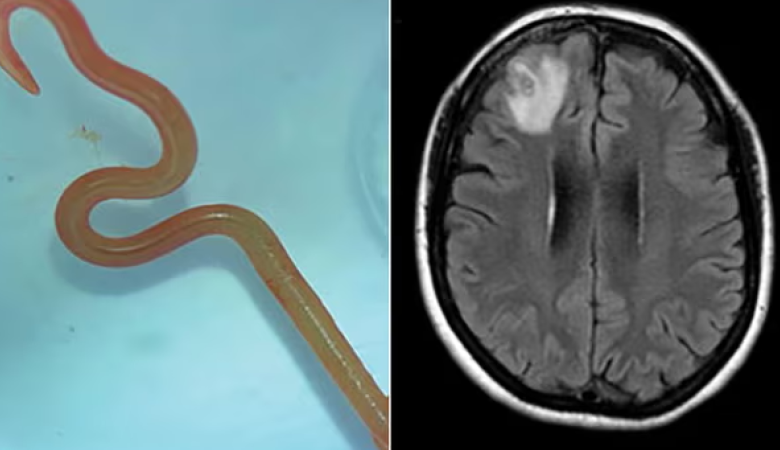Live worm found in woman’s brain in world’s first case

In January 2021, a 64-year-old woman from England, residing in New South Wales, Australia, was hospitalized following a three-week period of abdominal pain and diarrhea. These symptoms were subsequently accompanied by a dry cough and night sweats.
An MRI scan of her brain uncovered a shocking revelation: nestled within her right frontal lobe lesion was a parasitic roundworm, measuring an astonishing 8 centimeters (80mm) in length and a mere 1mm in diameter.
This motile helminth, identified as a third-stage larva of the Ophidascaris robertsi nematode species, was a shocking and rare discovery that left the medical community astounded.
This particular parasitic worm is known to inhabit the digestive tracts of carpet pythons native to the Australian state of New South Wales.
How this worm managed to infiltrate a human brain was a perplexing mystery that left doctors and researchers puzzled.
It is believed that the woman might have unintentionally ingested the eggs of the worm by consuming edible grasses that had been contaminated with snake feces.
Nonetheless, the precise cause remains speculative due to the lack of definitive evidence.
What followed was a highly delicate and complex surgical intervention. With no alternative option available, medical professionals embarked on the challenging task of removing the parasitic roundworm from the woman’s brain.
Against all odds, the surgery was a success, and the 8cm-long invader was safely extracted from her brain, finally putting an end to her extraordinary ordeal.
Medical professionals have postulated that the unique journey of these larvae towards the brain could have been facilitated by the woman’s compromised immune system, possibly influenced by the medication she was taking.
This case underscores the need for continued research into the intricate mechanisms underlying parasitic infections and their potential impact on human health.










